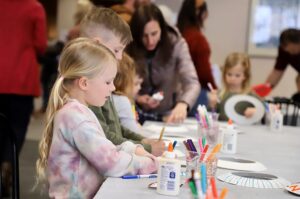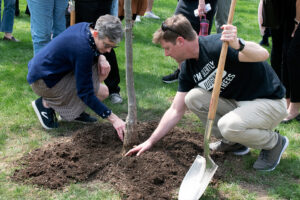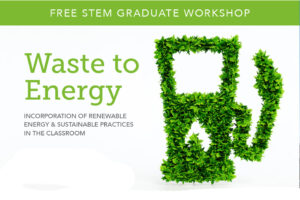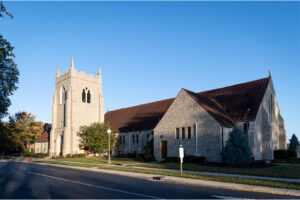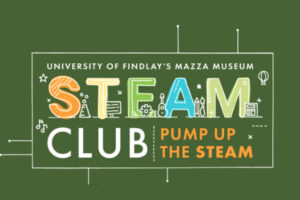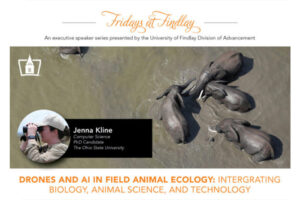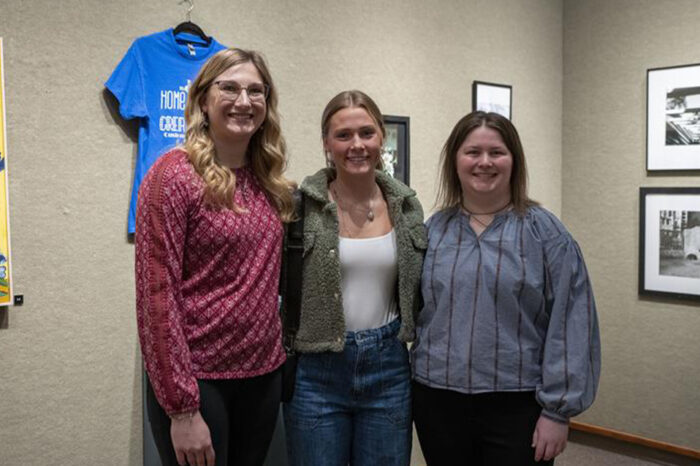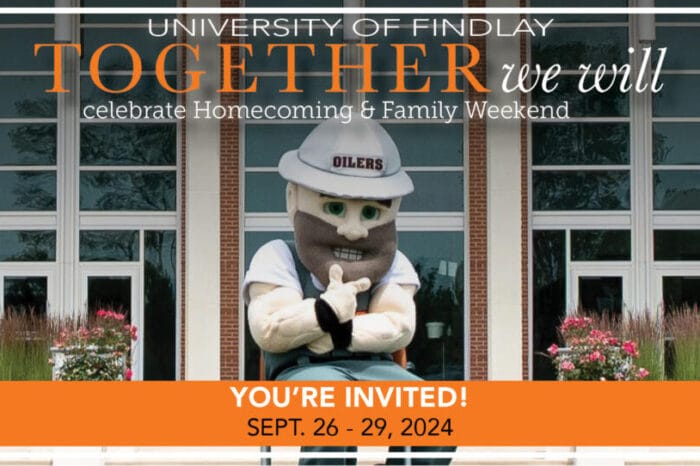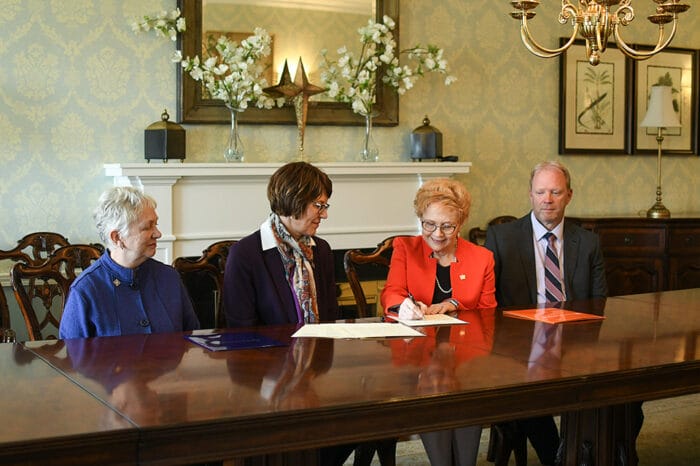NMI Alumni Celebrate 50th Anniversary
 Founded in 1966, the Nuclear Medicine Institute (NMI) at the University of Findlay celebrated its 50th anniversary during Homecoming and Family Weekend. Bringing back cofounder Paul Early and former program director Elaine Markon for the celebration, alumni and friends had the opportunity to see how much the program has grown and changed over the years.
Founded in 1966, the Nuclear Medicine Institute (NMI) at the University of Findlay celebrated its 50th anniversary during Homecoming and Family Weekend. Bringing back cofounder Paul Early and former program director Elaine Markon for the celebration, alumni and friends had the opportunity to see how much the program has grown and changed over the years.
For Early, it was a chance to talk with some of his former students and recognize the impact the program has had on so many. He enjoyed looking at “the book from day one” where a record of the first class was kept. “Back then I didn’t know how long it would last and how the institute would grow to serve the community in such a way,” he said. In fact, nearly 1,700 students have completed the nuclear medicine program throughout the institute’s history. Founded at Hillcrest Hospital near Cleveland, Ohio, the Nuclear Medicine Institute (NMI) moved to then Findlay College in 1984 as the first health professions program on campus.
Founded on the cusp of a growing industry, NMI began before an accreditation program existed, receiving initial accreditation in 1972. Early and Sodee went on to write textbooks about nuclear medicine that became the “bibles” of the field, according to Ryan Smith, D.H.Sc., current program director. “The founders of our program are essentially legends in the field,” he said. “Elaine Markon, who learned directly from them, brought the program to UF and served as the director for many years. We developed a reputation early on of being very rigorous.”
 Maintaining that reputation as a leader in nuclear medicine technology, the University now offers an additional one-year online program in positron emission tomography/computed tomography (PET/CT) for certified technologists focusing on advanced techniques in nuclear medicine. Some of these advanced techniques combine the different modalities using fusion imaging, a method on the cutting edge of the industry. “Combining a PET scan with a CT scan, we’re able to look at the anatomy and physiology of the organ at the same time and pinpoint the exact location of poor functionality in the body. Our technologists have to be uniquely trained to understand the theories behind both components,” Smith explained.
Maintaining that reputation as a leader in nuclear medicine technology, the University now offers an additional one-year online program in positron emission tomography/computed tomography (PET/CT) for certified technologists focusing on advanced techniques in nuclear medicine. Some of these advanced techniques combine the different modalities using fusion imaging, a method on the cutting edge of the industry. “Combining a PET scan with a CT scan, we’re able to look at the anatomy and physiology of the organ at the same time and pinpoint the exact location of poor functionality in the body. Our technologists have to be uniquely trained to understand the theories behind both components,” Smith explained.
After working as a technologist in the field, Smith, who graduated from the program, built his career at UF. “It’s very humbling to be part of the rich history of NMI. The fact that it’s lasted this long when other programs have come and gone is a testament to the quality of the program,” he said. Read more about the Nuclear Medicine Technology Program and some of its graduates in the next issue of FindlayMag due to reach mailboxes later this fall.
